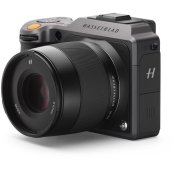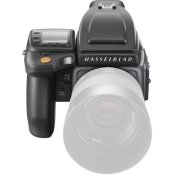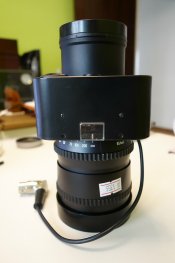Huss
Member
The world is your studio!
Then they took it off world....
Seeing they drove around in lunar rovers, can you do street photography on the moon?
The world is your studio!
Then they took it off world....
I believe that is what they did, shooting from the hip without the finder...Seeing they drove around in lunar rovers, can you do street photography on the moon?
Astronauts are such hipsters...I believe that is what they did, shooting from the hip without the finder...
The world is your studio!
Then they took it off world....


For sure you are right... we can use anything in the field. Still IMO it is fair to say the hassie 500 (etc) is mainly an studio camera, personally I'd say: A well fieldable studio camera.
Today hasseblad has a clearly field camera and a fieldable studio camera...
View attachment 263197 View attachment 263198
Differences are evident... a field camera is ergonomic when handheld, studio cameras tend to be modular system cameras...
Old hassies don't need to be labeled studio or field... they can do all... but IMO they are clearly studio oriented, at least commercially they were.
I know several (retired) pros that made a living from both studio portraiture and events (weddings, etc). All those I know had a mamiya RB67 or a hassie in the studio, but they mostly shot 35mm film cameras for events. This was around 35 years ago. The hassie could be carried to a wedding to at least make a share of the shots, but it was not agile enough or all the shooting, still one of those photographers I know shot all the wedding with a pair of hassies, but not many were much capable of such a thing. The RB67 was more a brick than the hassie, still it was hauled to weddings but with well more limited usage.
At the end what resulted a nice compromise was 645 format... Today top notch wedding Pros still using film do rely a lot in 645, in special the Contax 645, which mounts the Zeiss 80mm f/2.0...
The Pentax 67II is clearly a field camera that it is very agile for events, but film it's slower to charge , while a system camera with roll film backs are very fast to mount, compared...
Still photo enthusiats make less a distinction... but one thing is shooting to enjoy the experience and another one was making a living from shooting, all day long, one day after the other... in that situation criterions are not the same.
Worked like a charm even without the marine grade SS! Fed my family well for some 25 or so years! What happens when folks with no background try well designed equipment.And I bet your Hasselblads worked perfectly well even if they were not equipped with marine grade stainless steel screws.
Let's invent some new fatal flaw in a product that has been in use for six decades in all environments on earth, in space, and on the moon.
You have one very wrong assumption. Victor Hasselblad designed the Hasselblad camera for field use taking photographs of birds.
You have one very wrong assumption. Victor Hasselblad designed the Hasselblad camera for field use taking photographs of birds. I have never used my Hasselblads as studio cameras and the only time my Hasselblad goes on a tripod is with the 500mm lens or 2XE with the 500mm lens because the lens is too heavy to easily use hand held.
I mentioned this earlier in the thread, but there's a good documentary online about British landscape photographer Fay Godwin that shows her using her Hasselblad in inclement weather. Have a look starting at about 20:38, but watch the whole documentary if you get a chance, it's quite interesting.
Victor was an avid birder, he designed the 1600f/1000f with birding in mind, and published some books with it. There are pictures of him birding with a 500c/m and the 500mmVictor Hasselblad designed his cameras to perform well in aerial reconaissance duties, after a request from Swedish Air Force in 1940, so to shot "from a bird", later commercial models followed..
Well, on a multi-day back country trip, the P67 failed (wet batteries/electronics) while the Hasselblad never stopped. The P67 might be nice to shoot in the field, but it is not more weather resistant then the 'blad.....Clearly the hassies were much more fieldable than the RB67, but a P67II is another level !!! It was also the opinion of the (top level Pro) friend who lended me the hassies after trying the 67II....
I find the Hasselblad very nice in the field, as it was designed for.
I don't think there is a debate - it was used everywhere.Debate about if the 500 is studio or field ...
... Is it an studio camera? Is it fieldable ? Both are true...
The ELM was always only used in the studio. We never (well, almost never) took it into the field.
 sorry, but today's imaging industry cannot sport that level. Kodak Vericolor II was probably sharper than today's Portra, but still being able to smoothen low contrast skin textures... those photo works were totally Top Notch, with amazing MF focus roll-off that smaller formats only dream with. Today a Pro has quite inferior tools for a wedding, a D850 or a D6 may collect some 5k shots in a wedding, but not a single one is to match by far one selected in a good Vericolor MF Photo book, not matering how many hours were invested in manipulating the digital thing with photoshop...
sorry, but today's imaging industry cannot sport that level. Kodak Vericolor II was probably sharper than today's Portra, but still being able to smoothen low contrast skin textures... those photo works were totally Top Notch, with amazing MF focus roll-off that smaller formats only dream with. Today a Pro has quite inferior tools for a wedding, a D850 or a D6 may collect some 5k shots in a wedding, but not a single one is to match by far one selected in a good Vericolor MF Photo book, not matering how many hours were invested in manipulating the digital thing with photoshop... Some old-timers may recall that Hasselblad offered an 80mm lens with an automatic exposure module (a box on the top of the lens). I do not know how technically capable these were. I have only seen a few in store windows. Did they sell well?if "the field" was shooting a wedding then for sure the EL/M is the suitable model: 24 shots (220) in each back, an assitant loading backs, and the photographer only having to adjust focus, he could concentrate in expression and in composition... (also some attention was required to refine exposure... ) but at the end he could fire 24 shots without any distraction
Some old-timers may recall that Hasselblad offered an 80mm lens with an automatic exposure module (a box on the top of the lens). I do not know how technically capable these were. I have only seen a few in store windows. Did they sell well?
Fuji also offered a lens for their big 6×9 rangefinder with the automatic exposure module mounted on the top of the barrel. It looked very similar to the Hasselblad module. I wonder if a Japanese company made the electronics for both?Not so much for the banalities of weddings - remote operation work seems to have been one of the things for which the automation module was intended.
Fuji also offered a lens for their big 6×9 rangefinder with the automatic exposure module mounted on the top of the barrel. It looked very similar to the Hasselblad module. I wonder if a Japanese company made the electronics for both?
Some old-timers may recall that Hasselblad offered an 80mm lens with an automatic exposure module (a box on the top of the lens). I do not know how technically capable these were. I have only seen a few in store windows. Did they sell well?

| Photrio.com contains affiliate links to products. We may receive a commission for purchases made through these links. To read our full affiliate disclosure statement please click Here. |
PHOTRIO PARTNERS EQUALLY FUNDING OUR COMMUNITY:  |